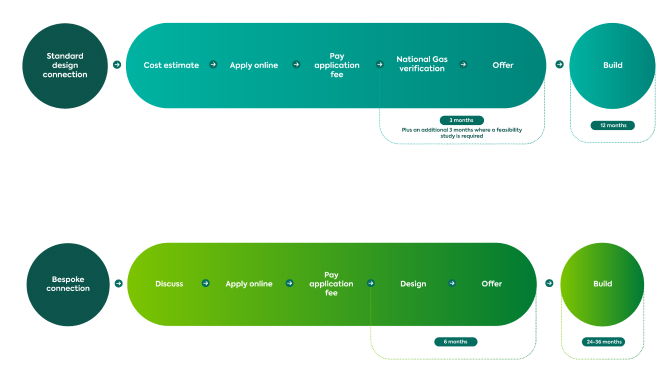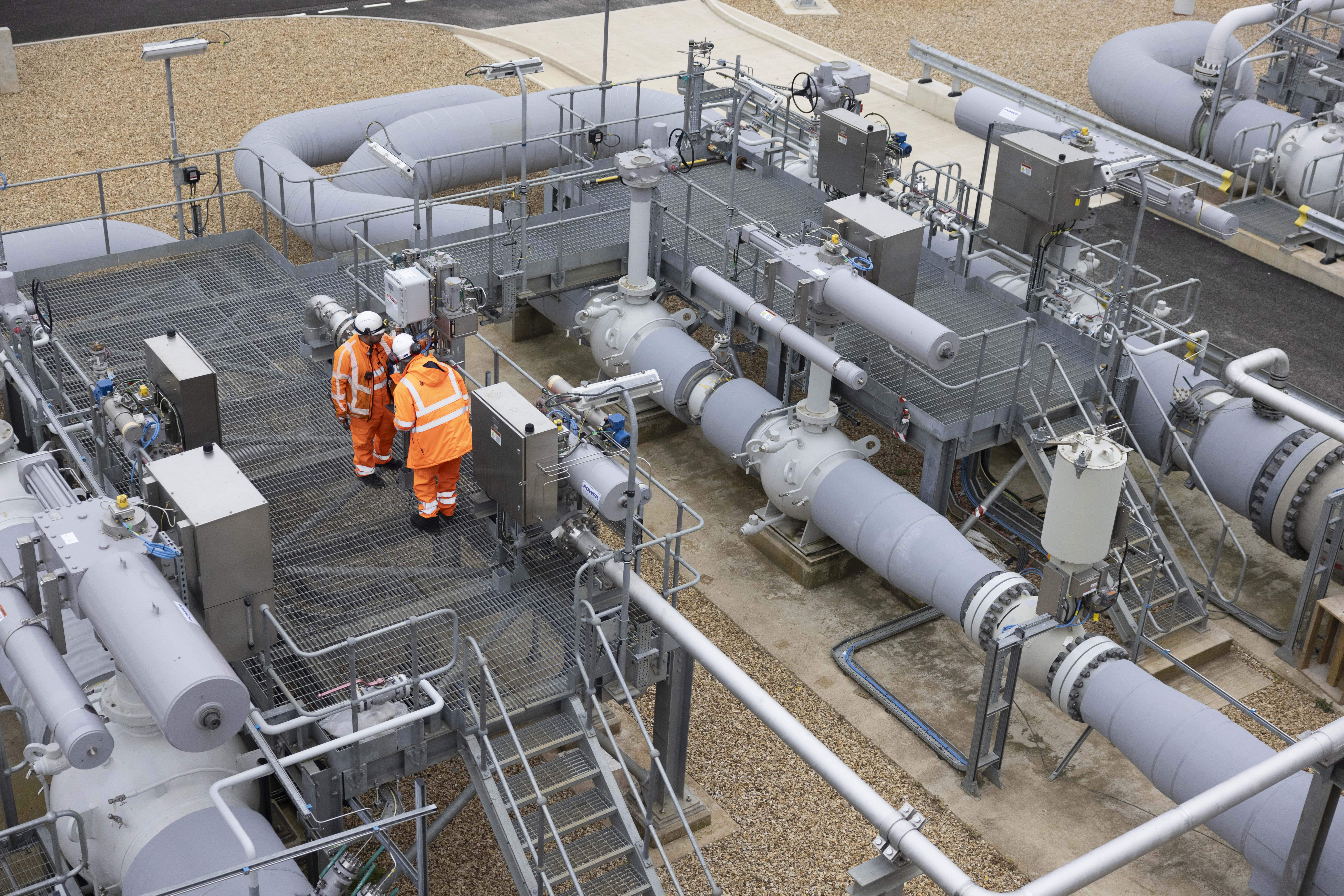CONNECTIONS
NTS connections process
Applying for a connection to the National Transmission System
The three main types of connection to the National Transmission System (NTS) are:
- Entry: A connection enabling you to inject gas into the NTS.
- Exit: A connection enabling you to take gas off the NTS.
- Storage: A connection enabling you to both take gas off the NTS and inject gas back into it.
Who can apply for a connection?
A number of connections can be provided on the NTS, including:
- Gas Distribution Networks (GDNs).
- Larger gas off-takers, such industrial users of gas, power stations, Combined Heat and Power (CHP) schemes, some major energy-intensive industries.
- Smaller gas off-takers, such as small gas generators and compressed natural gas.
- Larger gas delivery facilities, such as LNG terminals.
- Smaller gas delivery facilities, such as potential hydrogen or biomethane projects (entry, and entry/exit).
Before you make a formal application for a connection, please download, complete and return to us an Initial Enquiry Form. This will allow us to identify any issues and discuss them with you prior to you making your formal application for a connection.
Your formal application for a connection will be made via the Gas Customer Hub.
As a new applicant for a connection, you will need to register on the Hub and agree to terms and conditions. Please note that the first person to register your company in the Hub becomes the administrator for all users within the company.
How much will it cost?
For more detail about the costs of the connection process, please refer to the current Statement for Gas Transmission Connection Charging found in our Connections Document Library.
Once your project is connected to the NTS, you’ll need to pay Gas Transmission Transportation Charges that are collected by National Gas from NTS Users (NTS Shipper Users or DNO Users). You can find details of these charges in our Statement of Gas Transmission Transportation Charges on our Charging page.
How long will it take?
Timescales will vary according to the type of connection you’re applying for. Here’s a guide to the timescales involved in delivering offers.
- For an application for an Initial Connection Offer (ICO), the ICO will be delivered within two months. Please note: ICOs do not lead to a connection.
- For an application for a Full Connection Offer (FCO) requiring only a Conceptual Design Study (CDS), the FCO will be delivered within six months.
- For an application for an FCO requiring a Feasibility Study (in addition to a CDS), we will deliver the Feasibility Study Report within three months, and the FCO within six months from the date of your written acceptance of the Feasibility Study Report.
Following your acceptance of the FCO, the timescales for Detailed Design and Build will vary depending on the type of connection being delivered. From your acceptance of the FCO:
- Standard Design connections will take 12-24 months, whereas
- Bespoke connections will take 24-36 months.
At the end of the Detailed Design and Build there is a commissioning phase to ensure that the site meets the requirements of the NTS.

How to modify an FCO
If you have accepted an FCO and you wish to request an amendment to part or the whole FCO, your request must follow the A2O process, with the associated costs. Before you submit any Application to Modify a Full Connection Offer, please speak to your Gas Connections Manager.
How to modify an existing connection
Once you are connected to the NTS, you may need to alter your connection to accommodate changes in your organisation. Depending on the extent of the work involved, these alterations will need to go through either a minor modification process or a full modification application. The Charging Statement provides information on the types of application required. However, please speak to a Connections Contract Manager to discuss your modification before applying.
How to disconnect from the NTS
If you no longer require your connection to the NTS, you can choose to disconnect or decommission your connection.
- Disconnection involves physically isolating your facilities from the NTS, so that gas is unable to flow. The assets on site will enter a preservation (mothballing) state, and National Gas will conduct ongoing site maintenance to preserve the site and keep it safe, in case you wish to reconnect in future.
- Decommissioning involves returning the site to its original state by completely removing all pipeline and assets. If the assets are disconnected before the site is fully decommissioned, National Gas will conduct ongoing maintenance to ensure the site is safe until it is fully decommissioned.
If you would like to disconnect or decommission your NTS connection, you will need to follow the A2O process and apply for a Disconnection, or a Disconnection & Decommissioning.
Please first discuss your request with us by contacting us at [email protected].

